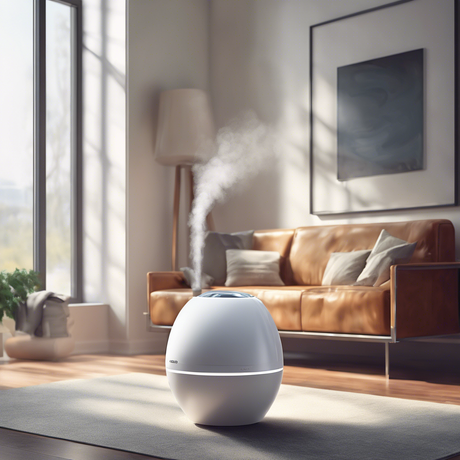- No products in the cart.
The Science Behind Humidity Control in Canadian Homes
02
Feb
Introduction: Canada's diverse climate presents unique challenges for homeowners, and one critical aspect of indoor comfort is often overlooked—humidity control. Understanding the science behind humidity levels is essential for creating a comfortable and healthy living environment. In this article, we'll delve into the intricacies of humidity control in Canadian homes, exploring the impact on both comfort and overall well-being.
The Basics of Humidity: Humidity refers to the amount of moisture present in the air. In Canada, where winters are cold and dry, and summers can be warm and humid, finding the right balance is crucial. The relative humidity (RH) levels indoors play a key role in comfort, energy efficiency, and health.
Winter Woes: During the winter months, Canadian homes often experience low humidity levels. Heating systems, such as furnaces, can further reduce indoor moisture, leading to discomfort. Low humidity can cause dry skin, irritated eyes, and respiratory issues. Additionally, it can contribute to static electricity and potential damage to wooden furniture and musical instruments.
The Impact of High Humidity: Conversely, the summer season in Canada can bring high humidity levels, especially in regions with warmer temperatures. Excess moisture in the air can lead to a host of problems, including mold growth, musty odors, and an increased risk of respiratory issues. High humidity can also make homes feel warmer than the actual temperature, prompting homeowners to rely more on air conditioning to maintain comfort.
Humidity Control Solutions: To address humidity challenges, Canadian homeowners can employ various strategies. One effective solution is investing in a quality HVAC system equipped with a humidity control feature. These systems can regulate moisture levels, ensuring optimal comfort throughout the year.
Another option is the use of dehumidifiers and humidifiers. Dehumidifiers are particularly beneficial in damp environments, helping to prevent mold growth and improve air quality. Humidifiers, on the other hand, add moisture to the air, making it more comfortable during dry winter months.
Smart HVAC Technologies: Advancements in HVAC technology have introduced smart thermostats that include humidity control features. These devices allow homeowners to monitor and adjust humidity levels remotely, providing a convenient and efficient way to maintain optimal indoor conditions.
Conclusion: Humidity control is a vital component of creating a comfortable and healthy living environment in Canadian homes. Understanding the science behind humidity levels empowers homeowners to make informed decisions about their HVAC systems and implement effective solutions for year-round comfort. By striking the right balance, Canadians can ensure that their homes remain havens of comfort regardless of the challenges presented by the country's ever-changing climate.













